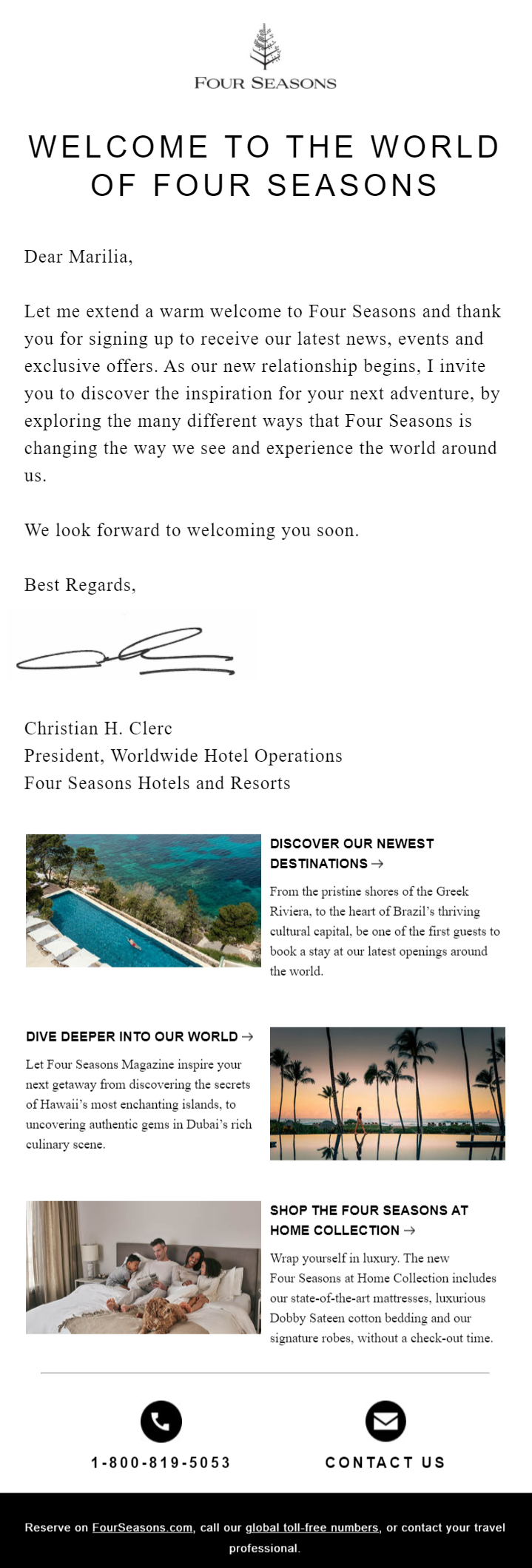Triggered emails are the secret weapon to many digital marketers in 2021. Sending relevant emails is the key to increasing conversions and yielding more ROI. Your subscribers are receiving hundreds of emails every day, and therefore, it is extremely important to stand out. The emails you send must be useful to the prospect and well-aligned with their journey.
For instance: A user in the awareness stage should receive introductory emails that demonstrate the usage of your product and how it can make things easy for them.
You can achieve this with the help of triggered emails.
What are triggered emails?
Triggered emails are sent automatically when a user takes an action or exhibits some engagement with your brand. For example: When a user abandons the cart on your eCommerce store, they will receive a triggered cart abandonment email.
Such trigger events (like cart abandonment) are predefined, and whenever a user meets these conditions, the email will be deployed without any manual intervention.
Why should a marketer invest in triggered emails?
- Triggered emails can take the user engagement to the next level as they perfectly follow the marketing triad of sending the right message at the right time to the right person.
- As these emails align with the subscriber’s actions, they can result in a higher conversion rate.
- You can expect a better customer retention rate and drive repeat purchases by sending triggered emails.
- It will also boost your customer loyalty and instill a sense of trust in their minds.
- You can focus on business growth and new ideas to increase profitability, as triggered emails do not need human intervention.
Types of Triggered Emails
There are several workflows that you must include in your triggered email strategy. Here’s a list of the most important types of emails that it must include.
1. Welcome emails
No sooner does a user sign up for your emails than they expect a welcome email from you. That’s the main reason why welcome emails perform incredibly well compared to other types of triggered emails and newsletters.
Your welcome emails must explain your company’s product and services to the subscriber. You can even share your vision, mission, and brand story to connect with the readers at a personal level.
It is recommended that you send out a series of three to five welcome emails to increase brand recall and keep your services at the top of the subscriber’s mind.

Why it works:
- Use of the subscriber’s name
- Email copy that reflects the brand’s image
- High-quality visuals that nurture the audience
- Elegant email design that’s super easy to navigate
- Phone and email contact options
2. Browse abandonment emails
Your prospects are quite likely to come to your website, go through the products or services, and then leave without adding anything to the cart. Browse abandonment emails can help you retarget these visitors and bring them back to your website. For example, when you search for a product on Amazon, they will send out very effective browse abdandoment emails according to the user’s viewing history.
You can also use these emails to cross-sell and upsell the products by sending relevant recommendations.

Why it works:
- Use of the subscriber’s name
- Reminds the subscriber of their recent browsing
- The use of models also works here to attract our attention, as humans have a natural inclination to look at faces (This tactic can be used to slow down viewers enough to reengage with the products they’d previously viewed)
3. Cart abandonment emails
Like browse abandonment emails, cart abandonment emails are another type of triggered emails sent to recover abandoned carts. Whenever users add products to their cart but do not complete the checkout process, you must send out cart abandonment emails. Your cart abandonment emails must be engaging enough to encourage the user to make the payment.
For example: You can offer a discount to get the user to make the purchase instantly.
Alternatively, you can create a sense of urgency and stimulate the fear of missing out. Use something like “Hurry, Offer valid for today only” or “Last two items left” to make your cart recovery emails work.
It is advisable to send a series of three to four cart abandonment emails to generate the best results.

Why it works:
- It’s clear & concise
- It’s shining the spotlight on a single product (the visual highlights the offering)
- The four benefits before the image emphasizes the primary reasons to complete this purchase
4. Transactional emails
Order confirmation emails show an open rate of 60%. This does not come as a surprise because customers are always excited to get notified about their order status. They literally wait for these emails.
Except for order confirmation emails, there are several other transactional emails as listed below:
- Order shipped email
- Email notifying the order delivery
- Return request processing
- Refund processed email
- Post-purchase feedback email
All these emails can be used to share recommendations based on their previous interaction and past purchases.

Why it works:
- It confirms the sale for the subscriber
- It allows multiple CTA’s keep the consumer in the loop
- Each CTA allows for the subscriber to continue interacting with the brand
5. Re-engagement emails
Despite making huge efforts, your subscribers will move on to other brands and stop engaging with your emails over time. To win back these customers and revive them out of dormancy, you must send out a series of three to four re-engagement emails.
Through these emails, you must let the subscribers know why they had signed up to your brand and highlight your USPs. Also, you can incentivize them with discounts to make them purchase from you again. Some brands also share the latest product updates and recently added features that the subscribers might have missed. If the users still don’t engage with your emails, it is best to let them unsubscribe and remove them from the list.

Why it works:
- Reminds the subscriber of the perks they can receive
- Creates FOMO (fear of missing out) on what they will lose by deactivating their account
- Enables a sense of urgency by offering a limited time offer
6. Birthday or anniversary emails
Occasion-based emails can considerably enhance the performance of your email marketing strategy. This fact is evident from a report by Omnisend that reveals that eCommerce businesses sending birthday emails to their customers yield a 45% open rate, 12% click-through rate, and 3% conversion rate.
Set the birthday email workflow in such a way that the first email is deployed a week before the D-day. Let the users know that you remember their birthday and make them feel special.
You can send the second email on the birthdate and the third one two to three days after the big day. Doing so will increase the possibility of conversions and boost customer loyalty too.

Why it works:
- The visuals of the email are festive and fun to stand out
- It includes a promo code which enables social currency (having access to something others don’t)
- It creates a sense of urgency by allowing 20% off of an online order
Wrapping Up
Triggered emails are the way forward if you want to drive faster business growth. For marketers who are already leveraging these triggered email workflows, you must set up more relevant and personalized triggers that would bring in a greater ROI.
You can also consider investing in advanced tools like Marketo and Salesforce to build a more powerful triggered email strategy.
